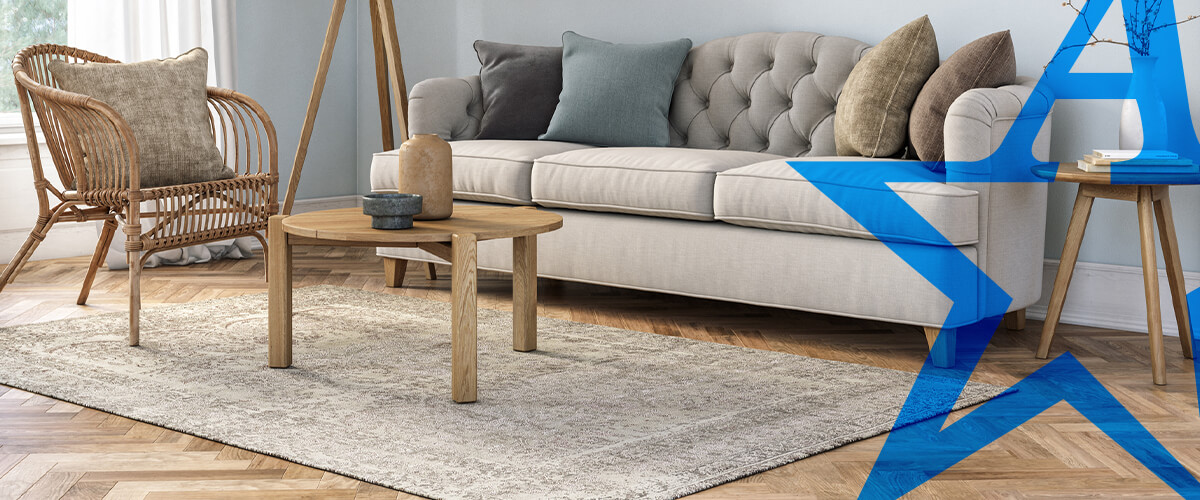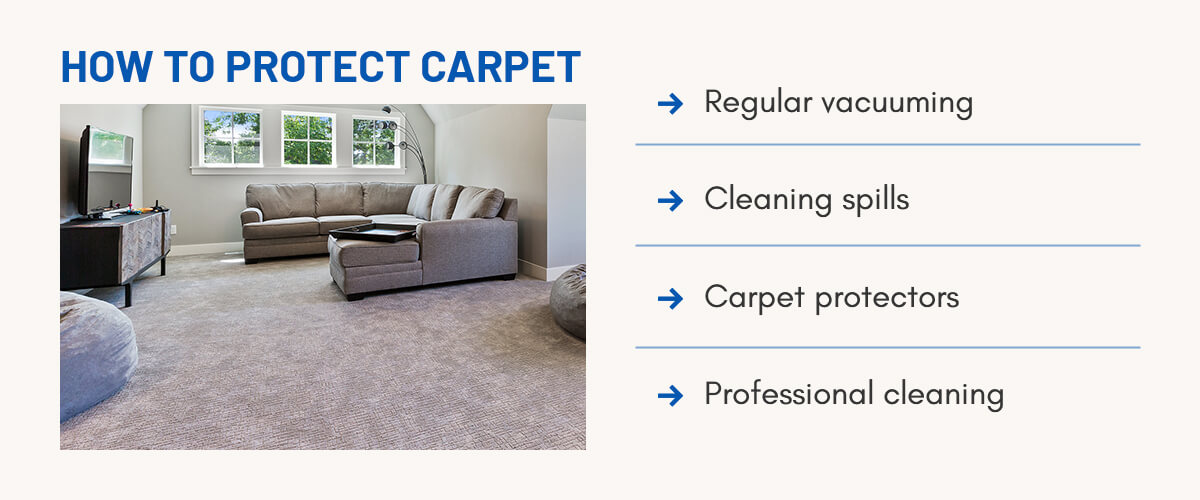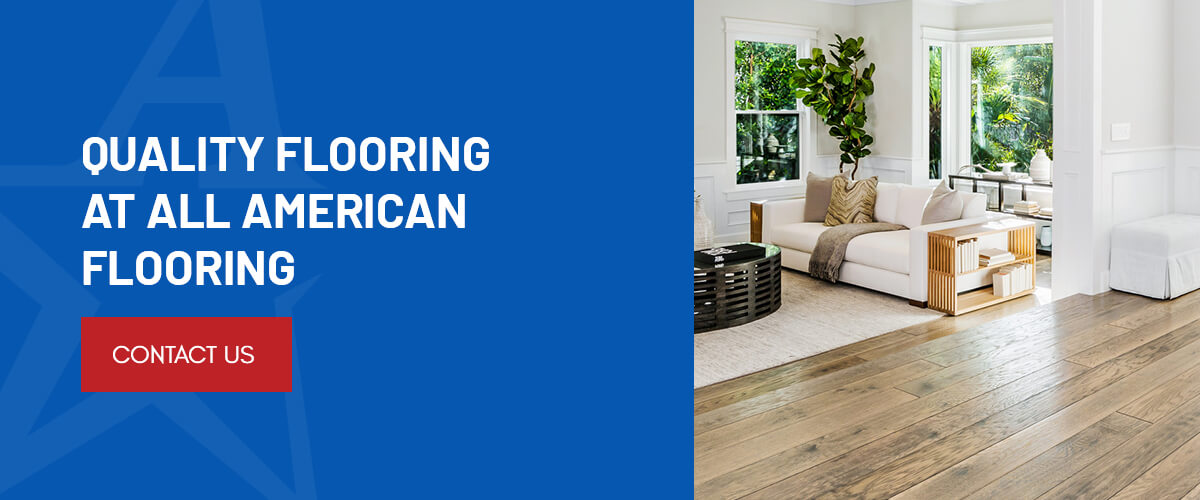How to Protect Your Floors

Jump To:
Your floor is a crucial part of your home. It’s responsible for keeping your living space neat, warm, comfortable and secure from the threat of the outdoor elements. Protecting your floor from damage is necessary for maintaining proper insulation, safety and comfort.
Since a quality floor is a significant investment, you’ll want to ensure it serves you well for years, minimizing the need for costly repairs and replacements. If you’re researching how to protect your floors, this comprehensive guide can help.
How to Protect Hardwood
Hardwood is inherently durable, making it a popular choice for floors. It also adds warmth, color, smoothness and style to the home. Regardless of the structural toughness, hardwood floors are still vulnerable and need proper care to remain in good condition.
Here are some of the common risks of hardwood flooring:
- Dents due to moving or dropping heavy objects
- Fading from excessive sun exposure
- Scratches from dirt, pet claws and children play
- Mold and mildew caused by moisture
- Damage from spills and foot traffic
- Damage due to harsh cleaning agents
Tips to Protect Hardwood Floors
As you consider how to protect your floors, you want to focus on prevention and maintenance. Here are some best practices for hardwood floor care:
- Prevent dirt and debris: Dirt is a serious threat to wooden floors as it grinds into the floorboards, leading to scratches and cracks over time. Place doormats and clean regularly to keep dust, dirt, grime and other debris away from your floor.
- Use proper cleaning tools: You can often sweep hardwood floors to keep them spotless. Use soft brooms and dust mops to avoid abrasions. When you need to mop the floor, use products specific to wood flooring or a mixture of water and mild soap. Remember to use a damp — not wet — mop, and never leave standing water on the floor. Water can be extremely damaging to hardwood.
- Blot spills: Blot spills and stains with a clean cloth instead of wiping. Try water and mild soap on tougher stains, or consider recommended hardwood floor cleaners.
- Use mats and runners: Mats at the doorways and runners in hallways are great for managing foot traffic that accelerates wear and tear.
- Consider recoating: Even with regular maintenance, your wooden floor will fade over time due to wear. Recoating will renew your finish and bring back the original shine.
How to Protect Laminate
Laminate is a versatile synthetic flooring option that simulates wood or tile with a lower price tag. However, laminate is far from cheap mimicry. High-quality laminate flooring offers style and sophistication without the downsides of the original material. For example, laminate can provide you with the beauty of hardwood while resisting scratches, dents and moisture damage. Still, how do you care for your laminate floor for long-lasting service?
Tips to Protect Laminate Floors
Follow these tips to maintain the durability, longevity and style of your laminate flooring:
- Place felt pads underneath furniture legs to prevent scratches on the floor when moving furniture.
- Use area rugs and carpet runners in high-traffic areas to reduce pressure on your floor that can accelerate wear.
- While many laminate floor options are water resistant, try not to leave spills on the floor for too long or expose it to high humidity, as the moisture could find its way through a crack.
- Clean your floor regularly with water and manufacturer-approved cleaners to keep dirt and debris away. Make sure to avoid harsh cleaning agents.
How to Protect Carpet
Carpet is among the warmest, comfiest and most visually pleasing flooring options. It takes beauty, luxury and coziness to a whole new level, offering a variety of styles, colors and textures to complement your decor. You can also layer carpets on top of other floor options.

Tips to Protect Carpet Floors
While carpets offer functionality and aesthetic appeal, they are a huge investment and responsibility, requiring proper maintenance for long-term service. Here’s how to protect your floors and keep your carpet looking fluffy and luxurious for a long time:
- Regular vacuuming: Carpet flooring is loved for its thick fibers, but that feature demands consistent vacuuming to remove dirt and dust that may result in wear the longer they stay. If your home experiences high foot and pet traffic, try vacuuming your carpet at least once a week.
- Cleaning spills: Carpets are now made with spill-resistant qualities to remove the worry from accidental spills. Still, you want to act fast and blot out spills rather than wipe them, as wiping pushes the stain deeper into the threads. For tough stains, use a mixture of water and a mild detergent.
- Carpet protectors: To maintain the integrity of your carpet, consider applying carpet protectors to areas with heavy traffic or those that bear a lot of furniture weight.
- Professional cleaning: Carpets need professional cleaning at least once a year to keep them in good shape.
How to Protect Luxury Vinyl
One of the best commercial and residential flooring options that can withstand high traffic is luxury vinyl. Made from synthetic material, it offers a variety of styles, colors and textures for convenience while maximizing inherent resistance to wear and tear. While luxury vinyl flooring is durable and long-lasting, it’s not indestructible. Some of the things that can damage vinyl include:
- Using wax and solvent-based polishes.
- Using harsh cleaning agents.
- Using abrasive scrubbing tools like bristle brooms.
- Exposing the floor to excessive sunlight.
Tips to Protect Luxury Vinyl Floors
These best practices can help keep your vinyl flooring functional and stylish:
- Use safe cleaning tools: Vinyl has a glossy, vibrant appearance that can dull when you use harsh cleaning agents and scrubbing tools. Invest in soft-bristled mops and avoid products like oil-based cleaners, wax solvents, vinegar and acetone.
- Clean regularly: Vinyl needs regular cleaning to remove dirt and grime and maintain the floor’s vibrancy.
- Use furniture pads: Attach protective pads to all furniture and appliances to eliminate the risk of abrasions. Lift furniture and large appliances instead of dragging them across the floor when moving them.
- Keep the floor dry: After washing vinyl floors, dry them thoroughly as water can seep through the edges and damage the seam.
How to Protect Tile
Tiles are popular flooring options for residential and commercial buildings due to their robust design and low-maintenance features. Aside from the different styles available on the market, tiles offer exceptional durability with proper care and maintenance. How do you ensure that your tiles serve you for years while maintaining their glossy appeal?
Tips to Protect Tile Floors
Here are essential tips to maintain your tile flooring:
- Sweeping and mopping: Tile is popular for being low-maintenance, meaning regular sweeping to remove dust and debris will typically suffice. You can commit to weekly mopping using water and a mild detergent to remove stains and sticky dirt.
- Door mats and rugs: Considering high traffic speeds up wear regardless of the flooring type, you may invest in area rugs, door mats and hallway runners to manage high-traffic areas.
- Furniture pads: Tile can chip and crack under pressure, necessitating a replacement. Consider padding furniture feet and appliances to reduce the risk of damaging your floor.
- Tile and grout sealer: It’s important to apply a tile and grout sealer periodically to help retain the appearance and integrity of your tile.
Explore Quality Flooring Options at All American Flooring
Your floors take a constant beating, from dust particles and spills to pet scratching and foot traffic. Learn how to protect your floors despite these unavoidable issues by implementing the best practices for your specific floor type. If you’re looking to replace your floors, leave that to All American Flooring, a flooring company with over 35 years of industry experience.
We understand your pain points and are equipped to address your flooring needs. If you appreciate premium flooring at unbeatable prices, schedule a free in-home estimate or contact us to talk to one of our experts.



